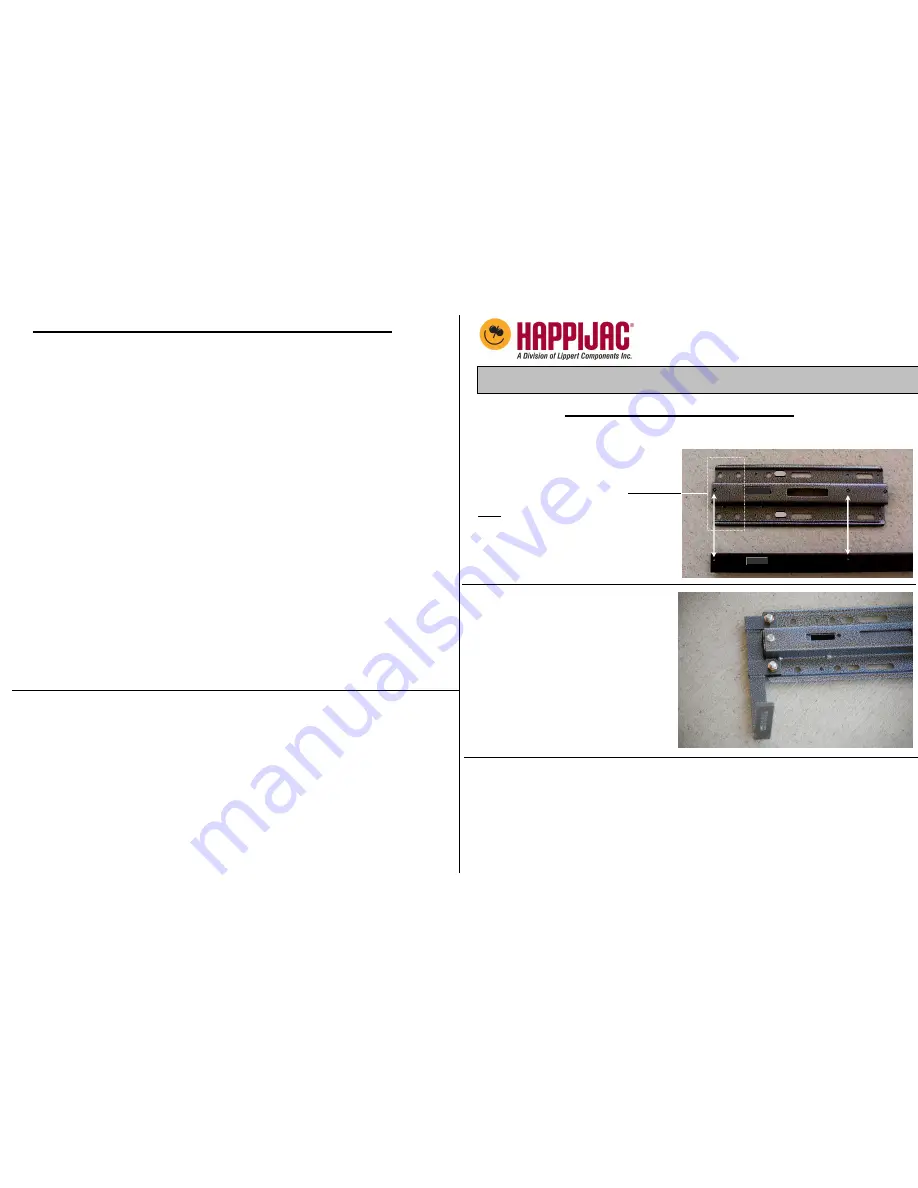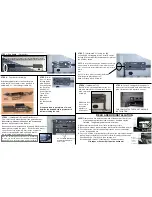
Frame Mount
Camper Tiedown System
Models: FT-DR8
FRONT ANCHOR INSTALLATION
"L" Shaped Frame Brace
Guide Plate
Stabilizer Bar
LOADING, UNLOADING & LEVELING THE CAMPER
When loading and unloading, the height at which the camper is set above the bed is critical to the proper
operation of the rear centering guide locks.
ALWAYS: Keep the camper bottom within 2" of the truck bed. While it is important to keep the camper close
to the truck, serious damage and injury can result if the truck "hooks" the camper as you pull from beneath it.
MOVE SLOWLY!!! Be Careful.
NEVER: Allow the camper to come above the rear centering guide locks! If the camper were lowered onto
the top of the centering guide lock, severe damage could occur to truck, camper, or both!
NEVER: Rely on the centering guide locks to align the camper as you load. While they will move the camper
SLIGHTLY side to side, their purpose is to lock the camper in place, on center in the truck once loaded.
Attempting to load when truck to camper alignment is poor can also cause serious damage to truck bed,
wheel wells, tail lights, etc.
ALWAYS: Remember to remove the turnbuckles prior to raising camper to unload.
NEVER: Attempt to level the camper on the truck with the turnbuckles installed!
ALWAYS: Remove the turnbuckles before leveling the camper. Your jacks were not
designed to lift both the truck and camper. Damage to the truck, tiedowns or camper is also likely to occur if
the turnbuckles are not removed when leveling.
NEVER: Lift the camper completely off the truck to level unless the truck is being moved
from beneath the camper and the camper is being lowered close to the ground. The camper is not stable at
that height and unsafe for occupancy unless resting on the truck.
ALWAYS: Lower the camper as close to the ground as possible when not on the truck.
The closer to the ground, the more stable the camper becomes.
NEVER: Allow the front of the camper to become lower than the back when loading or unloading. Doing so
shifts a tremendous amount of weight over the front jacks which could cause a dangerously overloaded
situation. Whenever the camper is not on the truck, it is a good idea to keep the front 4" higher than the back.
Except when the camper is lowered close to the ground and leveled for occupancy.
NEVER: Leave the camper up in the air on extended jacks. Lower the camper as low as possible when not
on the truck.
Guide Plate
Guide Plate
STEP 1
– Place the guide plates over the stabilizer bar and attach
both using #10 x ¾” sheet metal
screws provided in Kit A.
The arrows show the location of
these sheet metal screws.
Note: The 4 large
round
holes
in guide plate must be to the
outer ends of the assembly at both
ends.
STEP 2
– Attach frame braces to guide
plates using 4 of the 3/8 fine thread
bolts and corresponding nuts, secure
the frame braces to each end of the
guide plates as shown.
Note: Tighten the nuts just to finger tight
They will be removed and discarded later.
STEP 3
– [
Hardware Kit B
]
In this step, refer to the illustrations on the following page.
Center the assembly against front wall of truck bed. Select the screw location (A or B) where the
silver/gray guide plate fits tightest against the front wall. Drill a 3/32” pilot hole for the sheet metal
screw at best locations. Note: These screws are used to hold the assembly in place while drilling
the mounting holes for the anchor plates. Generally only one screw per side is needed.
It is a good idea to put a piece of wood between the bed and cab to prevent drill bit
from striking the cab.


